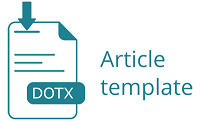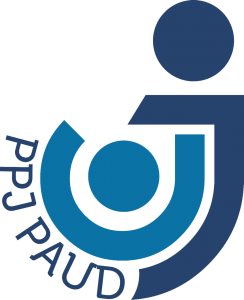The Role of Art Therapy in Psychocorrection: Clinical Applications and Implications for Children’s Inclusive Education
Abstract
Art therapy has emerged as a powerful psychocorrective approach that integrates creative expression with therapeutic principles to address a variety of psychological challenges. This paper explores the clinical applications and mental health outcomes associated with art therapy, focusing on individuals with anxiety, depression, trauma, and emotional disorders. Drawing on a comprehensive review of empirical studies and clinical trials, the paper highlights the effectiveness of art therapy in reducing stress, improving self-esteem, enhancing communication, and fostering emotional regulation. Particular attention is given to its non-verbal nature, which makes it highly accessible in culturally sensitive contexts where stigma surrounding mental health persists. The paper also evaluates the role of the therapist and the process of creative expression as a pathway to healing and personal growth. Findings confirm art therapy’s potential as both a complementary and standalone method in psychocorrection, particularly in mental health care systems requiring innovation and inclusivity.
Keywords
Full Text:
PDFReferences
Abbing, A., Baars, E. W., de Sonneville, L., Ponstein, A. S., & Swaab, H. (2019). The effectiveness of art therapy for anxiety in adult women: A randomized controlled trial. Frontiers in Psychology, 10.
Akcan, G., & Varol, A. H. (2024). Art history therapy: The role of art history in the psychotherapy process. Journal of Contemporary Psychotherapy, 54(1), 77–82.
Aliev, A.-A., Roberts, T., Magzumova, S., Panteleeva, L., Yeshimbetova, S., Krupchanka, D., Sartorius, N., Thornicroft, G., & Winkler, P. (2021). Widespread collapse, glimpses of revival: a scoping review of mental health policy and service development in Central Asia. Social Psychiatry and Psychiatric Epidemiology, 56(8), 1329–1340.
Baran, N., Nowak, A., Nowak, A., Bogusz, K., Cywka, Ł., Bielak, A., Szwed, W., Maksymowicz, M., & Machowiec, P. (2023). Art therapy as a primary and adjunct therapy in interventions for people living with serious illnesses - a review of the literature. Journal of Education, Health and Sport, 43(1), 39–52.
Barnish, M. S., & Nelson-Horne, R. V. (2023). Group-based active artistic interventions for adults with primary anxiety and depression: a systematic review. BMJ Open, 13(6), e069310.
Bedford, T., Abu Rasheed, H. M., Schneider, J., & Househ, M. S. (2022). Art therapy and beyond: Emerging practice innovations and implications for practice and research in the Arabian Gulf. QScience Connect, 2022(3).
Chan, N. C. T., & Michaels, D. (2022). Brief, structured, group art therapy for women with breast and/or gynaecological cancer. International Journal of Art Therapy, 27(3), 130– 142.
Ciasca, E. C., Ferreira, R. C., & Santana, C. L. (2016). Art therapy as a complementary treatment for depression and anxiety: A systematic review. Journal of Psychiatry and Behavioral Sciences, 12(3), 45–56.
Czamanski-Cohen, J., Wiley, J. F., Sela, N., Caspi, O., & Weihs, K. (2019). The role of emotional processing in art therapy (REPAT) for breast cancer patients. Journal of Psychosocial Oncology, 37(5), 586–598.
Feen-Calligan, H., Ruvolo Grasser, L., Debryn, J., Nasser, S., Jackson, C., Seguin, D., & Javanbakht, A. (2020). Art therapy with Syrian refugee youth in the United States: An intervention study. The Arts in Psychotherapy, 69, 101665.
Gussak, D. (2009). The effectiveness of art therapy in reducing depression in prison populations. International Journal of Offender Therapy and Comparative Criminology, 53(4), 444–460.
Haeyen, S., Chakhssi, F., & Van Hooren, S. (2020). Benefits of art therapy in people diagnosed with personality disorders: A quantitative survey. Frontiers in Psychology, 11.
Han, J. (2023). A systematic literature review of art therapy on depression recovery.
International Journal of Literature and Arts.
Kapitan, L. (2023). Transforming power through cultural humility in the intercultural contact zone of art therapy. Art Therapy, 40(2), 61-67.
King, J. L., & Kaimal, G. (2019). Approaches to research in art therapy using imaging technologies. Frontiers in Human Neuroscience, 13.
Koshechko, N. (2021). The influence of types of art therapy on the resolution of conflict situations by students of higher education institutions. Visnyk Taras Shevchenko National University of Kyiv. Pedagogy, 1 (13), 29–33.
Macaj, E., & Kerbizi, M. (2021). Literature and art therapy, as an applied model used by restorative justice: Case study—Minors at Kavaja Minors Institution in Albania. Journal of Educational and Social Research, 11(2), 61.
Ministry of Public Health of Uzbekistan. (2019). Annual report on psychiatric admissions in Uzbekistan. Tashkent: Ministry of Public Health.
Monti, D. A., Peterson, C., Kunkel, E. J., Hauck, W. W., Pequignot, E., Rhodes, L., & Brainard,
G. C. (2006). A randomized, controlled trial of mindfulness-based art therapy (MBAT) for women with cancer. Psycho-Oncology, 15(5), 363–373.
Pearce, J., Njobo, L., Mills, E., Agnese, A., & Luzzatto, P. (2024). The TT-AT trauma protocol piloted in different international settings: Zambia, UK, Italy. International Journal of Art Therapy, 29(1), 30–38.
Purohit, A. (2023). A creative odyssey to healing and self-discovery. International Journal of Advanced Research, 11(10), 795–796.
Regev, D., & Cohen-Yatziv, L. (2018). Effectiveness of art therapy with children: A systematic review. The Arts in Psychotherapy, 61, 69–81.
Rublyova, T., & Lisnyak, M. (2023). Methods of psychotherapeutic correction of the emotional state of drug addicts in the process of treatment and rehabilitation measures. Психология и Психотехника, 3, 164–173.
Savytska, O., Shkrabiuk, V., Pedorenko, V., Sytnik, S., Naichuk, V., & Nazarevych, V. (2022). Art therapy as a means of psychological correction of emotional disorders. BRAIN. Broad Research in Artificial Intelligence and Neuroscience, 13(4), 196–211.
Schnitzer, G., Holttum, S., & Huet, V. (2021). A systematic literature review of the impact of art therapy upon post-traumatic stress disorder. International Journal of Art Therapy, 26(4), 147–160.
Schweizer, C., Knorth, E. J., & Spreen, M. (2021). Art therapy with children with autism spectrum disorder: A systematic review of communication and social outcomes. Journal of Autism and Developmental Disorders, 51(8), 2789–2802.
Schoeman, K. (2023). A group art therapy intervention model to address mental health stigma in a rural community in South Africa. South African Journal of Arts Therapies, 1(1), 156– 181.
Shamy, A. K. bin. (2023). The role of art therapy in treating different age groups. International Journal of Multidisciplinary Studies in Art and Technology, 6(2), 96–120.
Slayton, S. C., D'Archer, J., & Kaplan, F. (2010). Outcome studies on the efficacy of art therapy: A review of findings. Arts & Health, 2(2), 123–135.
Stuckey, H. L., & Nobel, J. (2010). The connection between art, healing, and public health: A review of current literature. American Journal of Public Health, 100(2), 254–263.
Uzbekistan Department of Education. (2019). Mental health survey of students across 299 schools. Tashkent: Uzbekistan Department of Education.
Van Lith, T. (2016). Art therapy in mental health: A systematic review of approaches and practices. The Arts in Psychotherapy, 47, 9–22.
Walters, D. A. (2020). Art as therapy; museums and galleries as places for psychodynamic art therapy. Asia Pacific Journal of Counselling and Psychotherapy, 11(1), 3–22.
DOI: https://doi.org/10.17509/edukids.v22i1.82505
Copyright (c) 2025 Edukids: Jurnal Pertumbuhan, Perkembangan, dan Pendidikan Anak Usia Dini

This work is licensed under a Creative Commons Attribution-ShareAlike 4.0 International License.















.jpg)






